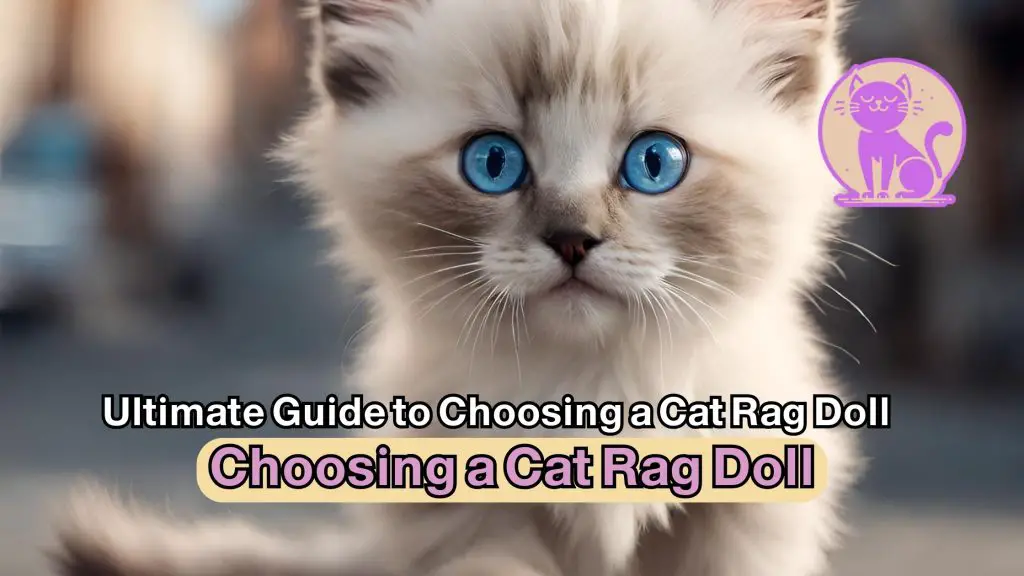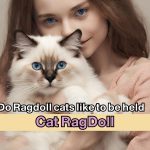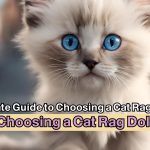Welcome to the enchanting realm of ragdoll kittens, where the allure of silky fur and sapphire-like eyes is just the beginning. This comprehensive guide is created for those who dream of adding the affectionate and serene company of a Ragdoll cat to their lives. Whether you’re looking to connect with ragdoll cat breeders, contemplating the heartwarming path of ragdoll cat adoption, or seeking the best ragdoll cat breeders, this article is your indispensable resource. We will provide you with the essential knowledge and insightful tips to ensure that your journey to pet ownership is as joyful and fulfilling as the presence of a Ragdoll cat itself.
Introduction to Ragdoll Cats

Distinctive for their gentle demeanor and striking features, Ragdoll cats have captured the hearts of cat enthusiasts worldwide. Renowned for their plush coats, large blue eyes, and notably serene personalities, Ragdolls are a breed that stands out both in terms of ragdoll cat size and their characteristic disposition. Being a relatively new breed in the feline world, they have quickly risen to prominence for their sociable natures and remarkable compatibility with family life.
The essence of ragdoll cat care is understanding their significant need for companionship and their preference for serene environments. They are cats that thrive on affection and human interaction, marking them as one of the most companionable breeds available today. Prospective pet parents should be prepared to provide ample attention, which is crucial for their emotional well-being.
Moreover, the ragdoll cat personality is marked by an amiable and easygoing temperament, rarely showing any signs of aggression. This tranquility makes them perfect pets for a diverse array of households. Whether it be a bustling family dynamic or a single-person home, the ragdoll adapts with grace and ease. Below is a comparative table detailing key traits that describe their personalities and henceforth dictate their care requirements.
| Traits | Description | Impact on Care |
|---|---|---|
| Affectionate | Their tendency to form strong bonds with family members. | Requires regular interaction and presence of owners. |
| Docile | Non-confrontational and easygoing, known to be very placid. | Ensuring a peaceful and safe environment is vital. |
| Intelligent | Capable of learning and understanding routine and commands. | Stimulation through play and learning activities is beneficial. |
| Sociable | Enjoys being around humans and other pets. | Opportunities for social interaction should be provided. |
| Adaptable | Adjusts well to different environments and situations. | Transitions and changes should be introduced gradually. |
In summation, owning a ragdoll cat is a commitment to nurturing a bond forged on mutual affection and understanding. Embracing their serene nature and specific needs is part of the journey, making ragdoll cat care a truly rewarding experience. Their significant ragdoll cat size demands a spacious environment, just as their loving personalities necessitate a warm-hearted home.
Understanding the Ragdoll Cat Personality

Delving into the world of Ragdoll cats, it’s evident that the breed’s personality is as luxurious as its fur. Known for their serene disposition and friendly demeanor, Ragdoll cats are epitomized by their ragdoll cat characteristics, which make them superb companions for those seeking a friendly and affectionate pet. Their calmness and the unusual way they go limp when held contribute to the breed’s name and charm, an attribute that delights many owners. This plush and beautiful breed, particularly the blue ragdoll cat, is famed not only for its striking appearance but also for its genial nature.
Temperament and Behavior
Ragdoll cats exude an alluring blend of nobility and playfulness, traits that have endeared them to cat enthusiasts worldwide. Their behavior often resembles that of a trusting and gentle dog, earning them the nickname “puppy cats”. These felines are known to greet their owners at the door, follow them around the house, and engage in fetching toys, demonstrating their penchant for interactive play. They thrive on attention and affection, which cements their status as devoted household members.
Compatibility with Families and Other Pets
Not only do Ragdoll cats score high on the scale of individual companionship, but their compatibility with families and other pets also sets them apart. Their tranquil nature lends itself well to homes with children, and they often display a protective instinct towards the young ones. As social animals, Ragdolls usually get along splendidly with other cats and even household dogs, provided proper introductions are made. It is this remarkable adaptability that makes blue ragdoll cats, among others in the breed, sought-after family pets.
| Characteristic | Description | Impact on Home Environment |
|---|---|---|
| Gentle | Soft demeanor, does not display aggression. | Creates a serene living space, safe for children. |
| Social | Enjoys company, not prone to hiding or solitude. | Promotes a connected family environment, inclusive of the pet. |
| Affectionate | Seeks physical closeness, enjoys cuddling. | Provides comfort and stress relief to household members. |
| Intelligent | Capable of learning tricks and commands. | Allows for engaging play and interaction, enhancing bond with owners. |
| Adaptable | Adjusts well to new environments and household changes. | Makes for an easy transition when introducing the cat to a new home or pets. |
The History of the Ragdoll Cat Breed
Tracing its lineage back to the 1960s in sunny California, the Ragdoll cat breed encapsulates a rich history of selective breeding that paved the way for its renowned gentle demeanor and striking ragdoll cat colors. Originally developed by Ann Baker, the Ragdoll breed emerged through a careful breeding process that focused on nurturing traits such as a docile temperament, a plush coat, and vivid blue eyes. These efforts resulted in a cat that exhibited remarkable affability and a distinct physical beauty—characteristics that continue to captivate cat enthusiasts around the world.
As the breed gained popularity, the Ragdoll’s palette of colors expanded, ranging from the classic seal and chocolate to the rarer blue and lilac. These various ragdoll cat colors added to the breed’s allure, making each cat unique while maintaining the breed’s inherent charm and grace. This diversity in appearance has been a significant factor in the Ragdoll’s allure, contributing to its status as one of the most sought-after companion animals in the pet market.
While Ragdoll cats are cherished for their sociability and stunning looks, they are also known for commanding a premium—a reflection of the quality and care taken in their breeding. The ragdoll cat price varies widely, influenced by factors such as pedigree, color, and breeder reputation. Owning a Ragdoll cat is considered by many to be a significant investment in a lifelong furry companion, with prices ranging to reflect the true value of this exceptional breed.
| Color | Price Range | Popularity |
|---|---|---|
| Seal Point | $800 – $2,000 | High |
| Blue Point | $1,000 – $2,500 | Very High |
| Chocolate Point | $800 – $2,000 | Moderate |
| Lilac Point | $1,200 – $3,000 | Rare |
The historical tapestry of the Ragdoll breed continues to be woven as enthusiasts and breeders alike celebrate and uphold the distinctive characteristics that make Ragdoll cats a beloved part of countless families. Understanding the Ragdoll’s past is essential for appreciating the nuances that influence its cost and care in the present day. Through a blend of captivating history and continued devotion to breed standards, Ragdoll cats have firmly established their place within the hearts and homes of cat lovers worldwide.
Essential Characteristics of a Cat Rag Doll
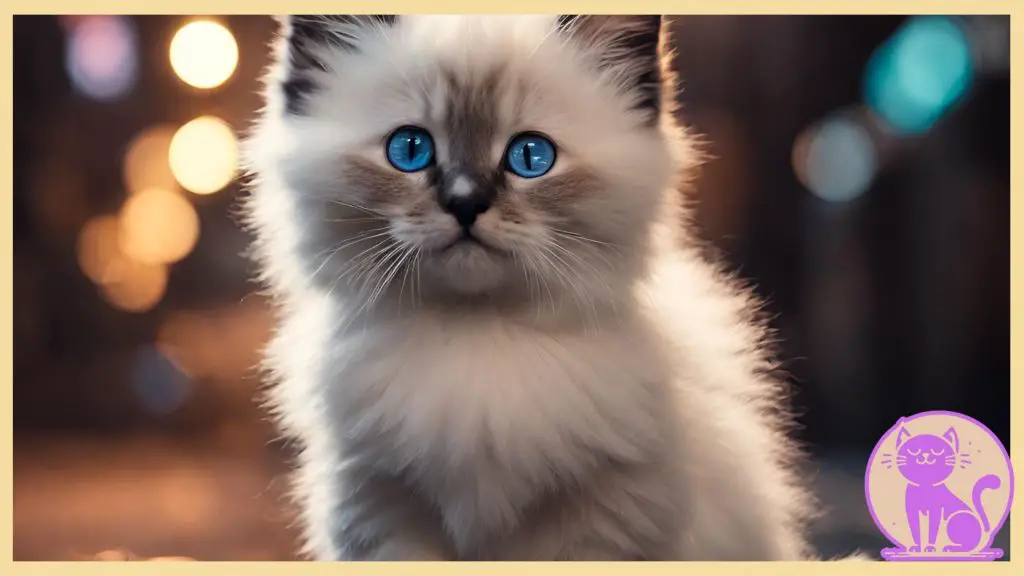
In the landscape of domestic feline breeds, the Ragdoll cat emerges as a paragon of grace and allure, entrancing enthusiasts and potential owners alike. Renowned for their luxurious coats and endearing demeanor, Ragdoll cats are a gem within the pet community. Prospective owners enticed by the possibility of a ragdoll kitten for sale or those considering ragdoll cat adoption must acquaint themselves with the breed’s distinctive physical properties and understand the fundamentals of ragdoll cat care, to ensure these felines lead long and healthy lives.
Physical Attributes
Ragdoll cats are lauded for their sprawling size, with a robust build that exudes a gentle giant’s charm. A full-grown Ragdoll cat adds an element of majesty to any room, with their silky fur and piercing blue eyes that seem to hold the depth of the ocean. Yet, their appearance is matched by their serene nature, making them not just a sight of beauty but also of tranquility in the household.
Common Health Issues
While Ragdoll cats are generally healthy, they do share some common health issues intrinsic to their breed. These range from cardiovascular concerns such as hypertrophic cardiomyopathy to kidney problems like polycystic kidney disease. Regular veterinary check-ups, alongside proactive health monitoring, play a pivotal role in safeguarding the well-being of these affectionate companions. The table below outlines significant health considerations and recommended strategies for Ragdoll cats:
| Health Condition | Potential Signs | Preventive Measures |
|---|---|---|
| Hypertrophic Cardiomyopathy | Lethargy, rapid breathing, hind leg paralysis | Yearly cardiac examinations, genetic testing |
| Polycystic Kidney Disease | Increased thirst and urination, weight loss | Routine kidney screening, ultrasound diagnostics |
| Gastrointestinal Issues | Vomiting, diarrhea, change in appetite | Diet management, regular health check-ups |
Ultimately, the endeavor to nurture a Ragdoll cat into a thriving household member encompasses a commitment to health education and a readiness to engage with professional veterinary care. The responsibility to foster an environment conducive to wellness secures the joy that a Ragdoll’s companionship unfailingly brings.
Varieties of Ragdoll Cat Colors and Patterns
The beauty of the Ragdoll breed extends beyond their gentle nature to include a spectacular variety of colors and patterns that cat lovers adore. While their plush coats and luminous blue eyes are hallmark traits, the diversity in appearance is one of the joys of selecting a Ragdoll cat. Below, we explore the recognized spectrums of ragdoll cat colors, including the exquisite blue Ragdoll cat.
Color Palette of Ragdoll Cats
Ragdoll cats flaunt a rich array of colors that enrich their aesthetic appeal. Ranging from the palest lilac to the deepest seals, their color palette is truly mesmerizing. Blue ragdoll cats are especially sought after for their tranquil and soft grey hues resembling a misty sky, which stand in beautiful contrast to their creamy fur.
- Seal – The dark brown shades that can appear nearly black in low lighting.
- Blue – A diluted seal color, offering gentle grey tones.
- Chocolate – Lighter than seal, with a warm, milk chocolate color.
- Lilac – A frosted version of chocolate, with a beige-grey coat.
- Red – Also known as “flame”, with a striking bright reddish hue.
- Cream – Pale shades that can be mixed with other colors for a softer look.
Recognizing Different Patterns
Recognizing the patterns in Ragdoll cats can enhance the appreciation for their complexity and beauty. Each pattern holds its own standard within the breed, and these patterns can significantly influence the overall look of the cat’s coat.
| Pattern | Description | Key Traits |
|---|---|---|
| Colorpoint | Dark colors in specific points like the ears, face, paws, and tail. | No white markings, body lighter than points. |
| Mitted | Similar to colorpoint with white “mittens” on the front paws and white boots on the back legs. | White chin, stomach, and sometimes a white stripe down the face. |
| Bicolor | White color extends beyond the paws, often forming an inverted ‘V’ on the face. | Larger areas of white, with darker colors typically on the ears, tail, and mask. |
| Lynx | Tabby-like markings that overlay any of the above patterns. | Striped appearance, noticeable ‘M’ on the forehead, often accompanied by unique tabby whisker pads. |
| Tortie | Mixture of the Ragdoll’s colors with a tortoiseshell pattern. | Mottled blend of darker colors, often chocolate and black, or lilac and blue in blue ragdoll cats. |
| Torbie | A combination of tortie and lynx patterns. | Swirled mix of the tortoiseshell coloration with the lynx tabby striping. |
The kaleidoscope of ragdoll cat colors and patterns is not only pivotal for breed standards but also contributes to the distinctiveness of each cat. Whether you are captivated by the soothing shades of a blue Ragdoll cat or enchanted by a vibrant tortie, understanding these variations can help you choose a feline friend that resonates with your personal aesthetic and heart.
Size and Growth: What to Expect with a Ragdoll Cat
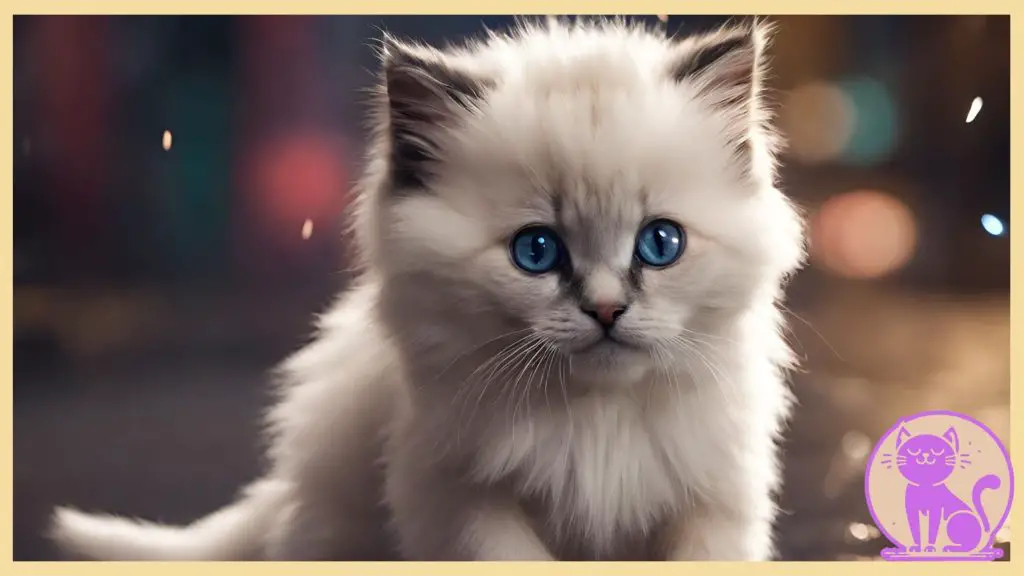
When considering a ragdoll kitten for sale, it’s important to understand the potential growth and size of your new pet. Ragdoll cats are among the largest domesticated cat breeds, renowned for their majestic presence and gentle demeanor. As experts in feline development, we provide insights into what you can expect during the different stages of your Ragdoll’s life.
During their first year, Ragdoll kittens experience rapid growth. Owners should monitor their diet closely to ensure they’re receiving proper nutrition for healthy development. By the time they reach adulthood, which is around four years old, Ragdolls will have reached their full physical maturity, reflecting the grandeur of the ragdoll cat size which can be quite impressive.
| Age | Expected Size | Development Notes |
|---|---|---|
| 0-3 months | Small | Rapid initial growth |
| 4-6 months | Medium | Begins to show distinguishing Ragdoll traits |
| 7-12 months | Large | Growth slows, but kitten still developing |
| 1-3 years | X-Large | Growth plate closure, reaching near adult size |
| 4+ years | Full Size | Fully mature, reflecting characteristic Ragdoll size |
It’s noteworthy that even within the breed, there’s variability with some Ragdolls being heftier than others. Factors such as genetics, diet, and activity levels all contribute to the size of an individual Ragdoll. Therefore, when you come across a ragdoll kitten for sale, it’s wise to inquire about the parent cats to gauge the potential size of your kitten.
- Ensure balanced nutrition with vet-recommended cat food
- Regular check-ups to monitor growth and health status
- Plenty of playtime to encourage physical development
With proper nutrition, healthcare, and environment, your Ragdoll will grow up to be a strong, healthy, and sizeable companion. Always be prepared for the sheer size these beautiful cats can achieve, so you and your furry friend can relish a lasting, rewarding relationship.
How to Find Reputable Ragdoll Cat Breeders
If you’re in the market for a ragdoll kitten for sale, it’s essential to purchase from reputable ragdoll cat breeders to ensure the health and well-being of your future pet. But how can you ensure that the breeder you choose is among the best ragdoll cat breeders? Below we’ve provided critical insights and tips for making an informed choice.
Research Is Key: Start your search by compiling a list of breeders, then carefully investigate their reputations through reviews and cat breeder directories. Look for breeders who prioritize the health, lineage, and living conditions of their kittens. Better yet, seek out those who are affiliated with cat fancier groups and other professional organizations.
Questions to Ask: When you contact a breeder, have a set of questions ready. Ask about the breeder’s experience, the health history of the parents, the type of socialization the ragdoll kittens for sale have had, and what kind of support they offer to new owners. A good breeder will be transparent and happy to share detailed answers.
Visit the Facility: Whenever possible, arrange to visit the breeder’s facility. This will allow you to observe the environment your kitten is coming from. Look for a clean, safe, and nurturing space where cats are treated with love and respect.
| Checklist | Why It Matters |
|---|---|
| Affiliation with Recognized Organizations | Indicates professional standards and breeder accountability. |
| Transparency of Health Records | Ensures that the kittens are genetically sound and have a documented health history. |
| Environment and Socialization | Important for the temperament and well-being of the kitten. |
| After-Sale Support | Shows the breeder’s commitment to their kittens beyond the sale. |
| Positive Testimonials | Reflects good experiences of previous customers and the health of their cats. |
Choosing a ragdoll cat breeder is not a decision to be made lightly. Take your time to do your due diligence, which will lay the foundation for many joyful years with your new ragdoll companion. Remember, the best ragdoll cat breeders have not only impeccable reputations but also a genuine love for the breed and the welfare of each cat.
Blue Ragdoll Cat: A Closer Look at This Popular Variety

The blue Ragdoll cat is not only a sight to behold but also encompasses the quintessential traits of the Ragdoll cat personality that make this breed so cherished. Known for their silken steel-blue coats and mesmerizing azure eyes, the blue Ragdoll variant stands out among its peers. In this section, we dive into what makes the blue Ragdoll cat a sought-after member of the Ragdoll family.
Owners of blue Ragdoll cats often report a deep connection with their pets, citing their gentle nature and the intuitive bond they share. This variety, like all Ragdolls, possesses a serene demeanor, often going limp with contentment when cuddled.
- Stunning blue coat color that deepens with age
- Placid and affectionate disposition towards family members
- Known for adapting well to indoor living and compatible with other pets
When considering adding a blue Ragdoll cat to your family, it’s essential to understand their need for regular grooming to maintain their luxurious fur. Additionally, their peaceful disposition should be matched with a calm environment to truly allow their personality to shine.
Fanciers of the blue Ragdoll cat often describe them as “dogs of the cat world,” due to their loyal and companionable nature.
While choosing a blue Ragdoll cat, take into account that this breed can be particularly prone to certain genetic conditions, and it’s crucial to seek out health records and screenings from reputable breeders. Their wellbeing is paramount to ensure they live long, happy lives as part of your family.
Preparing for a Ragdoll Kitten: Supplies and Tips
Embarking on the journey of Ragdoll cat adoption requires more than just a love for those captivating blue eyes and their playful disposition. Ensuring you have a nurturing and well-equipped environment is essential. Welcoming a ragdoll kitten for sale into your home means considering their unique needs for comfort, safety, and stimulation. Let’s explore how you can create a kitten-friendly space within your living quarters and review the must-have items for your furry companion.
Setting Up Your Home for a New Kitten
Your new feline friend deserves a safe haven where they can explore and relax in security. Begin by kitten-proofing your home; secure loose wires, remove small objects that could be swallowed, and restrict access to potentially dangerous areas. Establish a designated space for your kitten to unwind and feel secure, complete with a cozy cat bed and access to a window for natural sunlight. Be sure to provide a scratching post–an indispensable item for any cat–to satisfy their scratching instincts and keep their claws healthy.
Essential Ragdoll Kitten Care Items Checklist
When it comes to ragdoll cat care, certain supplies are non-negotiable. Top of the list is a high-quality, nutritious diet designed specifically for kittens. Look for food that supports growth and maintains their lush coat. A sturdy litter box, as well as clumping cat litter, is crucial for hygiene and training purposes. Other essentials include a water bowl, interactive toys for mental and physical stimulation, and grooming tools such as a brush or comb to keep their fur mat-free. Remember, regular care and interaction are as vital as the supplies. It keeps your Ragdoll kitten happy, enriching the bond you share from the very first day.
FAQ
Q: What are the characteristics of Ragdoll kittens?
A: Ragdoll kittens are known for their gentle and affectionate nature, soft semi-long coat, and striking blue eyes. They are often very sociable and can form strong bonds with their human companions.
Q: How do I find reputable Ragdoll cat breeders?
A: Look for breeders who are registered with recognized feline associations, have transparent breeding practices, provide health clearances for their breeding cats, and are willing to answer all your questions about their kittens. Visiting the cattery and meeting the kittens and their parents is also recommended.
Q: Is it possible to adopt a Ragdoll cat instead of purchasing one?
A: Yes, Ragdoll cats can sometimes be found for adoption through shelters or rescue organizations that specialize in the breed. Adopting can provide a loving home to a Ragdoll cat in need.
Q: What is the typical personality of a Ragdoll cat?
A: Ragdoll cats are typically calm, laid-back, and affectionate. They are known for their docile and placid temperament and are often described as being “puppy-like” in their behavior.
Q: Are Ragdoll cats suitable for families with children and other pets?
A: Yes, due to their gentle disposition, Ragdoll cats generally get along well with children and other pets, making them an excellent choice for a family companion.
Q: Can you describe the blue Ragdoll cat?
A: The blue Ragdoll cat has a gorgeous bluish-white coat with deeper blue points, which are the ears, face, paws, and tail. Their eye color is typically an intense shade of blue, and they share the same friendly personality as other Ragdoll varieties.
Q: What are the common colors and patterns of Ragdoll cats?
A: Ragdoll cats come in various colors like seal, blue, chocolate, and lilac. The three recognized patterns are point, mitted, and bicolor, each with distinct markings.
Q: What should I expect in terms of Ragdoll cat size and growth?
A: Ragdoll cats are one of the largest domesticated cat breeds. They can take up to four years to reach their full size, which can be anywhere from 10 to 20 pounds, with some males exceeding this range.
Q: How do I prepare my home for a Ragdoll kitten?
A: Preparing your home for a Ragdoll kitten involves creating a safe and comfortable space, kitten-proofing the home, and providing essential items such as a litter box, food and water bowls, a cat tree, toys, and grooming tools.
Q: What does caring for a Ragdoll cat entail?
A: Caring for a Ragdoll cat involves regular grooming to prevent matting of their long fur, maintaining a consistent diet, ensuring regular veterinary check-ups, and providing plenty of affection and interactive playtime to keep them healthy and happy.
Q: How much do Ragdoll cats typically cost?
A: The price of a Ragdoll cat can vary widely based on the breeder, location, pedigree, and specific characteristics. Generally, prices can range from $800 to $2,000 or more for a kitten from a reputable breeder.
Q: What are some common health issues in Ragdoll cats?
A: Some health issues that Ragdoll cats may be prone to include hypertrophic cardiomyopathy, kidney disease, and gastrointestinal problems. Regular health check-ups and preventive care are vital for maintaining their health.

